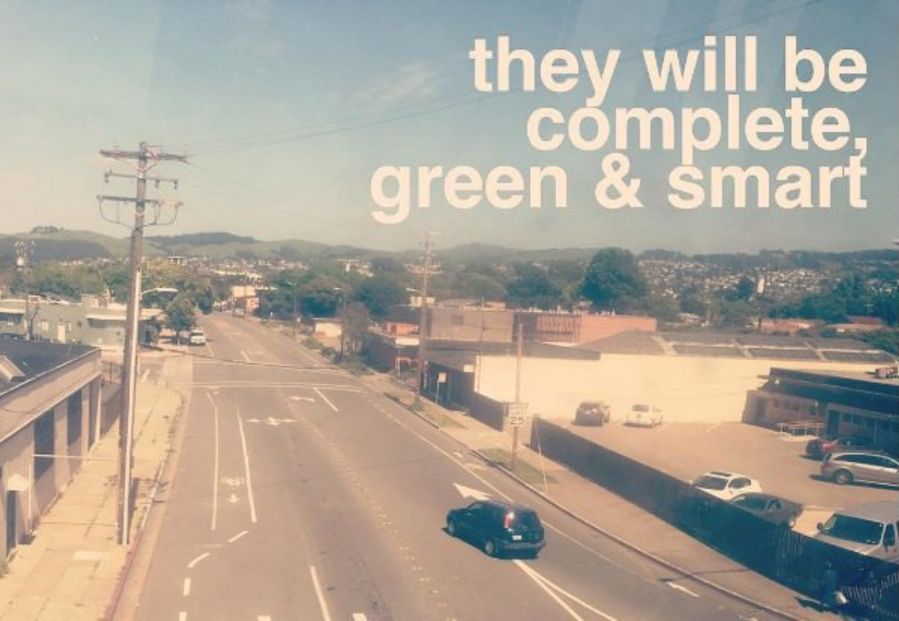Our streets, and our cities, are due for an overhaul, says Adam Beck, but strong collaboration is needed to secure all the working parts.
The Executive Director of the Smart Cities Council for Australia and New Zealand will coordinate Streets 2.0, a forum inviting engineers, landscape architects, planners, architects, technologists and policy makers to take part in Sydney on December 6.
“Streets 2.0 is a critical discussion the industry has to have,” Beck tells StreetChat.
“When streets consume up to 20 to 30 per cent of the land area of our cities and communities, it is worth making them function as sustainably as possible.
“Our streets are public spaces. Is the best use of space to fill them with two-tonne metal machines travelling at 60 kilometres an hour?”
With ideas about improving streets for pedestrians and bicycles, and trading fewer cars for more trees, now influencing our thoughts about streets, Beck says a range of intersecting opportunities and conflicts arise.
“We need to unpack these issues and ideas, and interrogate them,” he says.
“This is why we have created Streets 2.0, a forum to start this conversation.”
The streets of the future may already be here, says Beck, but they are scattered across the world in parts, a glimpse of what could be.
“I am sitting in a café in Barcelona, and outside the streets are filled with people, bikes, cafés and celebration. Cars are the minority, but they weave through the crowds. It just works,” he says.
“In Portland Oregon the streets soak up stormwater thanks to street trees and bioswales, around street grids no more than 200 by 200 feet. This is the optimal configuration to promote walkability, and thus economic activity on the streets.
“In Adelaide, a smart street lighting pilot program creates a safer environment, and reduces carbon emissions due to its greater efficiency, among other things.”
In isolation each of these streets provides a model for future urban planning. The challenge in 2016, he says, will be to bring these ideas into a holistic strategy that considers complete streets, smart streets and green streets all in one.
“Orchestrating all the strategies, together, is the big opportunity. We need to talk about these issues, not in isolation as is the case now, but in a mutually reinforcing way.
“Why can’t our streets be productive, net producers, rather than just conduits for, and consumers of, natural resources?
“The humble street light, for example, is only one use for a light pole. There are at least 11 other uses: a wifi hotspot, electric car charging point, environmental sensor and communications platform for a start.
“When we connect street furniture to the internet – oh boy, the opportunities just open up to make the street the new workplace and meeting place of the future.
“Our streets need to be our most celebrated public places and spaces. We need to put people at the heart of our thinking around planning, designing and managing streets.
“Street furniture is the Trojan horse for economically productive streets, along with street trees. Without street furniture, walkability is compromised. When walkability is compromised, economic activity is compromised, our health is compromised.
“The street of the future is a ‘people-magnet’, attracting people, and keeping them there.”
Autonomous and connected cars are potentially the greatest coming disruption to streets and cities, he adds.
“There is so much we know about the future of cars, but there is even more we don’t know. Changes in parking, land use, and in the relationship between vehicle and passenger. There are more uncertainties than certainties.”
Where uncertainties arise, other professions may have the answer. At the Museum of Sydney on Tuesday December 6, Streets 2.0 will open a larger discussion that aims to engage practitioners and policy makers in the future of streets.
The event is a collaboration between the Smart Cities Council of Australia New Zealand and the Australian Institute of Landscape Architects.
It is proudly sponsored by Street Furniture Australia, WE-EF lighting, ACO Australia and Andreasens Green and supported by Industry partners Engineers Australia, The Planning Institute of Australia, Consult Australia, Committee for Sydney and the ISCA.
“Streets 2.0 will be a critical juncture in our city-building thinking in Australia. The conversation starts on December 6 but will continue for some time as we use our streets as opportunities to transform our communities into the future,” says Beck.
“The street will be the living laboratory for our respective ideas and opportunities, across multiple sectors and disciplines.
“Making our streets the ‘net producer of’, rather than a ‘net consumer of’, is an exciting proposition.
“We all have a role to play – planning, designing, building, managing and using streets.”
Register via the AILA website.








